Home> Company News> What You Should Know Before Purchasing Hydraulic Pump Actuator
- AddressTianqiao, Beiyuan District, Jinan,Shandong
- Factory Addresstian qiao,jinan, shandong,China(Mainland)
- Worktime9:00-18:00(Beijing time)
- Phone(Working Time)86 0531-8299 9952
- Fax86 0531 -82990353
Hydraulic pump actuators are essential components in hydraulic systems, converting fluid power into mechanical power to perform a wide range of tasks. Choosing the right hydraulic pump actuator is crucial to ensure optimal performance and efficiency in your application. Before purchasing a hydraulic pump actuator, there are several factors to consider, including load capacity, operating pressure, environmental conditions, installation requirements, and power source compatibility. In this article, we will discuss the different types of hydraulic pump actuators, the factors to consider before purchasing, tips for choosing the right actuator, installation and maintenance procedures, cost considerations, and the importance of consulting with a hydraulic expert or manufacturer.
Types of Hydraulic Pump Actuators
Hydraulic pump actuators are available in different types, each designed for specific applications. Here are some of the most common types of hydraulic pump actuators:
-
Linear Actuators Linear actuators are hydraulic devices that produce a linear movement or motion. They are commonly used in hydraulic systems that require precise linear motion control, such as manufacturing and material handling equipment. Linear actuators can be single or double acting, depending on the application.
-
Rotary Actuators Rotary actuators produce rotary motion and are commonly used in hydraulic systems that require rotational movement, such as robotic arms and conveyor systems. There are two types of rotary actuators: vane and rack-and-pinion. Vane actuators are ideal for applications that require low to medium torque output, while rack-and-pinion actuators are better suited for high-torque applications.
-
Semi-Rotary Actuators Semi-rotary actuators are a hybrid between linear and rotary actuators. They produce limited rotary motion and are commonly used in applications that require both linear and rotary motion control, such as assembly and packaging machines.
-
Electric Hydraulic Actuators Electric hydraulic actuators use an electric motor to drive a hydraulic pump, which in turn drives the actuator. They are ideal for applications that require precise control, such as robotics and automation systems.
-
Hydraulic Cylinders Hydraulic cylinders are one of the most common types of hydraulic actuators. They produce linear motion and are used in a variety of applications, such as construction equipment and agricultural machinery. Hydraulic cylinders can be single or double acting, depending on the application.
Each type of hydraulic pump actuator has its advantages and disadvantages, and it is important to choose the right one for your specific application.
Factors to Consider Before Purchasing a Hydraulic Pump Actuator
Before purchasing a hydraulic pump actuator, there are several factors that you should consider. These factors will help you choose the right hydraulic pump actuator for your application and ensure that it operates effectively and efficiently. Some of the most important factors to consider include:
Load Capacity and Operating Pressure Requirements
One of the most critical factors to consider when choosing a hydraulic pump actuator is the load capacity and operating pressure requirements. Hydraulic actuators are available in a wide range of load capacities, and you need to choose one that can handle the load of your application. Similarly, different actuators are designed to operate at different pressure levels. You need to ensure that the actuator you choose is compatible with the operating pressure of your hydraulic system.
Temperature and Environmental Conditions
Hydraulic pump actuators are also sensitive to temperature and environmental conditions. Before purchasing an actuator, you should consider the operating temperature and environmental conditions of your application. If the actuator will be exposed to high temperatures, you need to choose an actuator that can handle the heat without degrading or failing. Similarly, if the actuator will be exposed to moisture, dust, or other environmental factors, you need to choose an actuator that can handle those conditions.
Installation Requirements and Available Space
The installation requirements and available space for the actuator are also important factors to consider. Hydraulic pump actuators come in various shapes and sizes, and you need to choose one that fits your available space. You also need to consider the installation requirements of the actuator. Some actuators require specific mounting brackets, while others can be mounted in any orientation. You need to ensure that the actuator you choose is compatible with your installation requirements.
Power Source Compatibility
Another important factor to consider is the power source compatibility. Hydraulic pump actuators can be powered by different sources, such as electricity, air pressure, or hydraulic fluid. You need to choose an actuator that is compatible with your power source. For example, if your application uses an electric power source, you need to choose an actuator that can be powered by electricity.
By considering these factors before purchasing a hydraulic pump actuator, you can ensure that you choose the right actuator for your application. This will help you avoid problems such as inefficiency, poor performance, and premature failure of the actuator.
Choosing the right hydraulic pump actuator
When it comes to choosing the right hydraulic pump actuator for your application, there are several factors to consider. Making the right choice is crucial for the proper functioning of your hydraulic system and can help prevent expensive breakdowns and repairs.
One important factor to consider is load capacity and operating pressure requirements. The hydraulic pump actuator must be able to handle the load and pressure requirements of your application. If the actuator is not powerful enough, it may fail under the pressure, while an actuator that is too powerful may be unnecessarily expensive.
Another important consideration is temperature and environmental conditions. The actuator must be able to withstand the temperature and conditions of your application, whether that be extreme heat, cold, or exposure to chemicals or other hazardous substances. In addition, the actuator must be corrosion-resistant to ensure a long lifespan.
Installation requirements and available space must also be taken into account. The hydraulic pump actuator must fit within the available space and be compatible with the installation requirements of your system. It is important to consult with a hydraulic expert or manufacturer to ensure proper installation and operation.
Finally, the power source compatibility of the hydraulic pump actuator must be considered. The actuator must be compatible with your system's power source, whether that be hydraulic, electric, or pneumatic.
Considering these factors can help you select the appropriate hydraulic pump actuator for your application, ensuring optimal performance and preventing costly breakdowns and repairs.
Installation and Maintenance of Hydraulic Pump Actuator
Proper installation and maintenance of hydraulic pump actuators are crucial for optimal performance and longevity. In this section, we will discuss the steps to follow when installing and maintaining a hydraulic pump actuator.
Installation of Hydraulic Pump Actuator
Before installing a hydraulic pump actuator, it is essential to ensure that the actuator's specifications match the application's requirements. The following are the general steps to follow when installing a hydraulic pump actuator:
-
Identify the correct mounting location: It is crucial to choose the correct mounting location that will provide sufficient support and minimize vibrations.
-
Align the actuator: Ensure that the actuator is aligned correctly and securely attached to the mounting surface.
-
Connect the hydraulic hoses: Connect the hydraulic hoses to the pump and the actuator using the appropriate fittings and clamps.
-
Fill the hydraulic system: Fill the hydraulic system with the recommended hydraulic fluid, and purge the system of any air.
-
Test the system: Test the system for proper operation and make any necessary adjustments.
It is essential to follow the manufacturer's installation instructions to avoid any damage or accidents.
Maintenance of Hydraulic Pump Actuator
Proper maintenance of hydraulic pump actuators ensures long service life and optimal performance. The following are the general maintenance procedures to follow:
-
Regular inspection: Inspect the actuator regularly for signs of wear and damage. Check for leaks, cracks, or other defects that could affect performance.
-
Lubrication: Lubricate the actuator's moving parts regularly to ensure smooth operation and prevent wear.
-
Cleaning: Keep the actuator clean to prevent the accumulation of dirt, debris, or other contaminants that could affect performance.
-
Replacement of worn parts: Replace any worn or damaged parts promptly to avoid further damage or safety hazards.
-
Follow manufacturer's guidelines: Always follow the manufacturer's recommended maintenance schedule and procedures.
It is essential to consult the manufacturer's maintenance manual for specific instructions and intervals.
Common Problems and Troubleshooting Techniques
Even with proper installation and maintenance, hydraulic pump actuators can develop problems over time. The following are some common problems and troubleshooting techniques:
-
Leakage: Check for any leaks in the hydraulic system and repair them promptly.
-
Excessive heat: Check for any obstructions in the cooling system or any other factors that could cause excessive heat buildup.
-
Slow operation: Check the hydraulic fluid level, pressure, and flow rate. Also, check for any obstructions in the hydraulic lines.
-
Erratic operation: Check for any damaged or worn components, such as seals or pistons, that could affect the actuator's operation.
-
Noise: Check for any loose or worn parts that could cause noise, such as loose mounting bolts or worn bearings.
It is crucial to follow proper troubleshooting techniques and consult the manufacturer's manual for specific guidance.
In the next section, we will discuss the cost considerations when purchasing hydraulic pump actuators.
Cost Considerations
When choosing a hydraulic pump actuator, cost is always a critical factor to consider. While it can be tempting to opt for the least expensive option, it is important to keep in mind that the cheapest option may not always be the most cost-effective in the long run.
Here are some cost considerations to keep in mind when selecting a hydraulic pump actuator:
-
Load capacity and operating pressure requirements: It is important to choose a hydraulic pump actuator that is capable of handling the load capacity and operating pressure requirements of your application. Using a pump actuator that is underpowered or not designed for the required pressure range can lead to premature failure and costly downtime.
-
Quality of the actuator: A high-quality hydraulic pump actuator may cost more upfront, but it will likely provide better performance and durability in the long run. When comparing different brands and models, it is essential to consider the reputation of the manufacturer and read reviews from other customers to ensure that the actuator is reliable and durable.
-
Installation requirements and available space: Some hydraulic pump actuators may require specific installation requirements, which can add to the overall cost of the actuator. Additionally, the available space in your application may limit the types of actuators that can be used, which can also impact the cost.
-
Power source compatibility: Hydraulic pump actuators may require specific power sources, such as electric or hydraulic, which can impact the cost of the actuator. It is essential to ensure that the chosen actuator is compatible with the available power source to avoid additional costs and installation time.
-
Maintenance and repair costs: It is also important to consider the ongoing maintenance and repair costs of the hydraulic pump actuator. Regular maintenance, such as changing the oil and inspecting the actuator, can help prevent costly repairs and extend the life of the actuator. Choosing an actuator that is easy to maintain and repair can also help reduce costs in the long run.
When comparing the costs of different hydraulic pump actuators, it is crucial to consider the overall value of the actuator. While a more expensive actuator may have a higher upfront cost, it may ultimately provide better performance, reliability, and longevity, making it the more cost-effective option in the long run.
It is also essential to consider the overall costs of the application, including any potential downtime, repairs, or replacements that may result from choosing a lower-quality, less expensive hydraulic pump actuator.
Overall, finding the right balance between cost and performance is crucial when choosing a hydraulic pump actuator. Working with a hydraulic expert or manufacturer can help ensure that the chosen actuator is the right fit for your application and provides optimal performance and efficiency.
Conclusion
Hydraulic pump actuators are essential components in many hydraulic systems, allowing for the conversion of fluid pressure into mechanical motion. Selecting the right hydraulic pump actuator for your application is crucial for ensuring optimal performance and efficiency. In this article, we have discussed the factors to consider before purchasing a hydraulic pump actuator, the types of hydraulic pump actuators available, and the installation, maintenance, and cost considerations to keep in mind.
When selecting a hydraulic pump actuator, it is important to consider factors such as load capacity, operating pressure requirements, environmental conditions, installation requirements, and power source compatibility. Understanding these factors can help you choose the right hydraulic pump actuator for your application and prevent potential issues down the line.
There are two main types of hydraulic pump actuators: linear and rotary actuators. Linear actuators convert hydraulic pressure into linear motion, while rotary actuators convert hydraulic pressure into rotational motion. Each type of hydraulic pump actuator has its advantages and disadvantages, and their applications vary depending on the specific requirements of the system.
Proper installation and maintenance procedures are essential for ensuring the optimal performance of hydraulic pump actuators. Following the manufacturer's instructions and consulting with hydraulic experts or manufacturers can help prevent common problems and extend the lifespan of the actuator.
Cost is another important consideration when selecting a hydraulic pump actuator. Factors that affect the cost of hydraulic pump actuators include load capacity, operating pressure requirements, and brand or model. It is important to balance cost and performance to achieve optimal results.
In conclusion, selecting the right hydraulic pump actuator for your application is crucial for ensuring optimal performance and efficiency. By considering factors such as load capacity, operating pressure requirements, and environmental conditions, choosing the appropriate type of actuator, following proper installation and maintenance procedures, and balancing cost and performance, you can achieve optimal results in your hydraulic system. It is also important to consult with hydraulic experts or manufacturers for expert advice and recommendations.


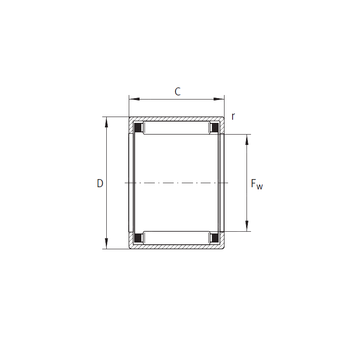 SCE5612 INA Needle Roller Bearings
SCE5612 INA Needle Roller Bearings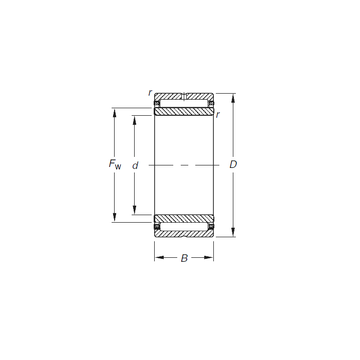 NKJ20/16 Timken Needle Roller Bearings
NKJ20/16 Timken Needle Roller Bearings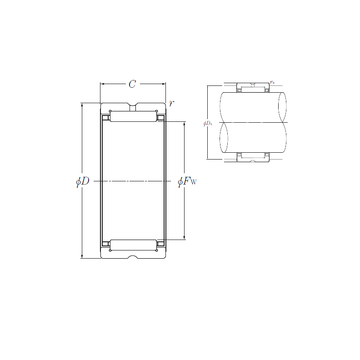 RNA4976 NTN Needle Roller Bearings
RNA4976 NTN Needle Roller Bearings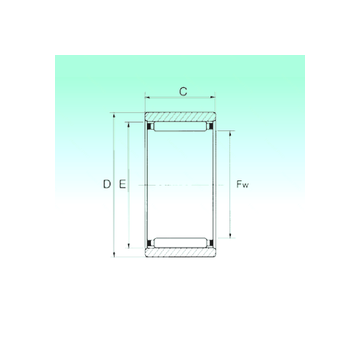 RNAO 35x47x16 NBS Needle Roller Bearings
RNAO 35x47x16 NBS Needle Roller Bearings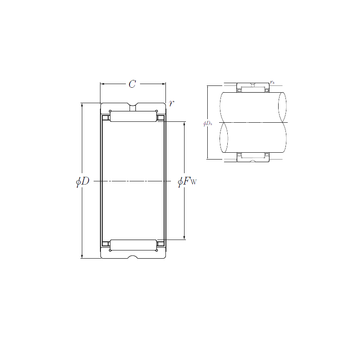 NK42/20R NTN Needle Roller Bearings
NK42/20R NTN Needle Roller Bearings